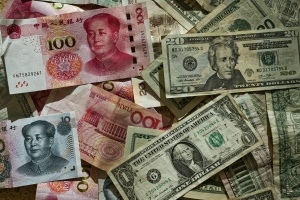
- Services
- Sector
- Languages
- Individuals
- About us
- Contact us
- Services
- Sector
- Languages
- Individuals
- About us
- Contact us
4.8 out of 5 Based on 2238 reviews


There are an estimated 2,300 languages spoken in Asia. But Chinese, Japanese and Korean make up the most popular East Asian languages. Upon hearing the three languages spoken, you may struggle to distinguish exactly which one is which. Even the written alphabet can be hard to tell apart.
While the three countries may be close in proximity, the languages have significant differences and unique features. The experts at one of the UK’s leading translation company, Absolute Translations have laid out a brief history and basic features of all the languages below:
As discussed in our previous blog about The Top Three Spoken Languages, Chinese is not a single language but rather a group of related dialects. Mandarin, Uyghur and Standard Mandarin all make up the Chinese language, which is one of the oldest in the world.
The standard Chinese written language, otherwise known as traditional Chinese was created in 1913 – a year after China was proclaimed a republic. Prior to this, there wasn’t a commonly spoken language so the written form was created to unify the language.
Traditional Chinese is still currently used in Hong Kong, Macau and Taiwan. However, a form of Simplified Chinese has since been introduced.
Before the 4th century, Japan did not have a writing system of its own so it gradually began to adopt the Chinese script, merging the Chinese characters into their own Japanese style. However, Japan later evolved its own language by creating two other scripts: Katakana and Hiragana.
Compared to the 3,000 characters in Chinese, Hiragana and Katakana are made up of only 50 letters. Hiragana features every sound you can make in the Japanese language while Katakana is used for imported words from other languages such as English.
With Korea located so geographically close to China, it is no surprise that the Korean language adopted Chinese characters too. Unlike Japan, Korea did have its own spoken language. But it did not have a writing system so they borrowed characters for their sound values and meanings.
However, in the 15th century, Korea created its own written language in an effort to promote literacy amongst its people. Although it didn’t immediately take on, so people in Korea continued to use Chinese characters for a long time. The Korean language started being used widely in the 20th century because it was easier to learn than the Chinese written language.
Whether you’re looking for a financial translation in Japanese or to translate a document in Korean, our team of highly skilled translators have an excellent knowledge of over 200 written and spoken languages – including Korean, Japanese and Mandarin Chinese. We work with professional linguists living and working across the globe to deliver the most authentic and culturally-accurate translations.
For more information about our Chinese, Japanese or Korean translation services, get in touch with us on 0333 577 0767.

Publishing a book to an international market is a fantastic opportunity. It is a huge career milestone t...

Think of the work involved in creating museum exhibitions. The concept development, design, fundraising,...

Think of the work involved in creating a stellar marketing campaign. Market research, competitor analysi...
As part of our ongoing efforts to protect the environment for future generations, Absolute Translations is proud to have achieved carbon negative status!
